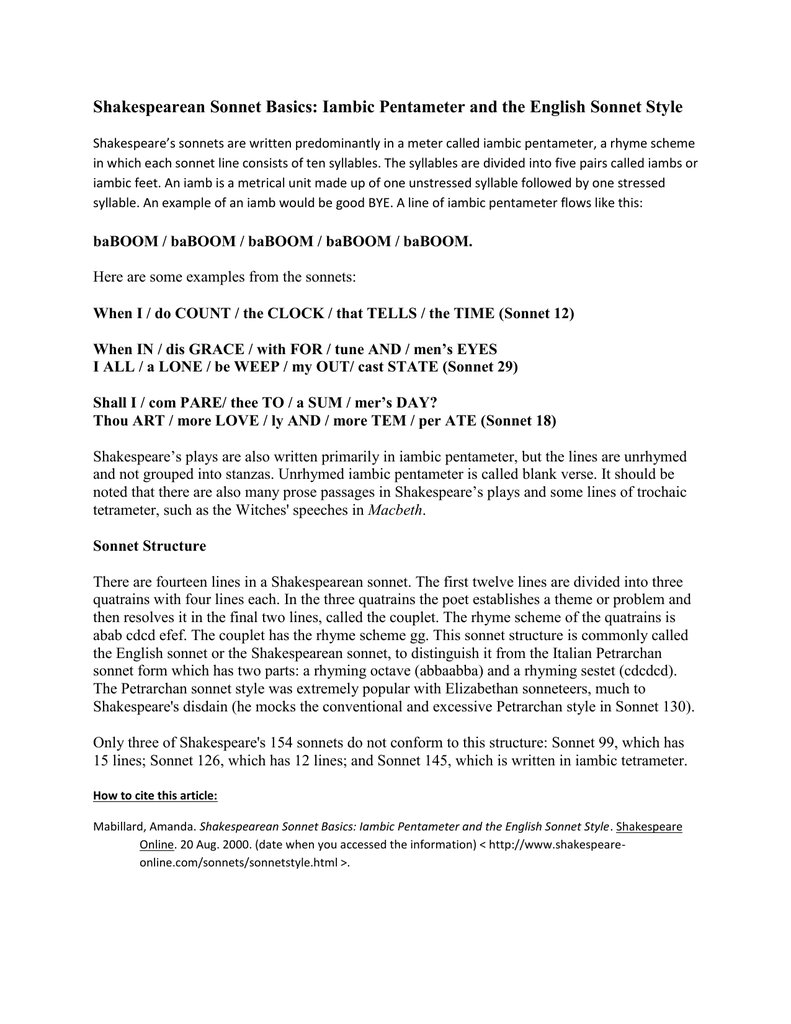



So long lives this, and this gives life to thee.The key difference between Shakespearean and Petrarchan sonnet is their structure. So long as men can breathe, or eyes can see, When in eternal lines to Time thou grow’st. Nor shall death brag thou wand’rest in his shade, Nor lose possession of that fair thou ow’st, Sometime too hot the eye of heaven shines,Īnd every fair from fair sometime declines,īy chance, or nature’s changing course, untrimmed Rough winds do shake the darling buds of May,Īnd summer’s lease hath all too short a date. Of course, any crash course on sonnets would be woefully incomplete without a mention of one of the most iconic sonnets ever written, “Shall I Compare Thee To A Summer’s Day?” by William Shakespeare. It can be used to easily create powerful, acute poems that convey particularly complicated ideas or thoughts. Shakespearean sonnets are excellent at conveying strong emotions with clever twists at the end, often times due to the emphasis placed on the GG. This is, arguably, very simple and easy to learn, which is part of the reason it originally grew so popular. Most of the time, they follow a very specific rhyming pattern of ABAB CDCD EFEF GG. Modeled after the revolutionary way Shakespeare wrote, it uses three quatrains and a couplet. The Shakespearean sonnet is the other form of the sonnet. This form is known for being applied well to the English language. Petrarchan sonnets are known for being less focused on romance and romantic vision and more focused on observations and arguments. The first stanza is composed of eight lines, followed by six more lines in the next stanza that oftentimes respond to the first. Named after one of the earliest and most skilled writers of the sonnet, Francesco Petrarca, its structure is divided into two stanzas. Petrarchan sonnets relate directly to the sonnets’ Italian roots. Sonnets can be divided into two further subgroups, Petrarchan and Shakespearean, which can either serve as a testament to the complexity of sonnets themselves, or the love that poets have for classifying various poetic forms. Iambic pentameter is a rhythm in poetry that is composed of ten syllables, where stressed and unstressed syllables alternate. The typical structure of a sonnet consists of fourteen lines that utilize iambic pentameter. The term “sonnet” is derived from the italian word “sonetto” which is used to describe a little sound or song. They are the vanilla of the poetry world: popular and commonplace but not without reason. This is one of the reasons why Sonnets have existed as a pivotal part of literature and culture.

For hundreds of years, authors have used sonnets to elegantly contrast two concepts, exploring hidden depths.


 0 kommentar(er)
0 kommentar(er)
